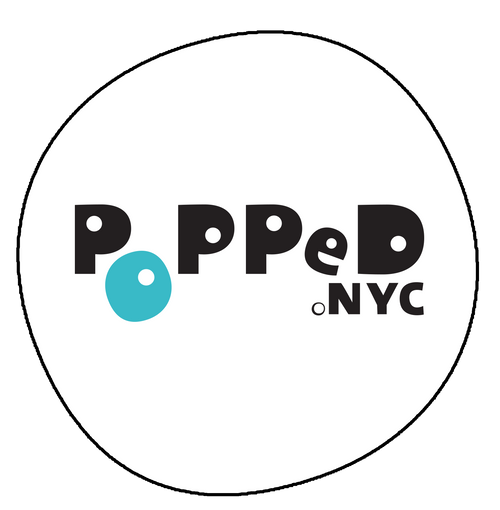Millions of people in the US use CBD for its potential health benefits. But, one-third of them don’t understand the difference between the different types of CBD.
We’re not only all about CBD at Popped.NYC; we’re also about CBD education. So, let’s explore the differences between CBD products.
What Different Types of CBD Are There?
CBD comes in various forms (oils, edibles, etc.), but did you know there are also different types of CBD, each containing different compounds and ingredients?
CBD products are made with either full-spectrum CBD, broad-spectrum CBD, or CBD isolate.

What Do the Different Strains of CBD Mean?
Full-spectrum CBD contains all of the cannabinoids (including THC) of the plant, while broad-spectrum products contain the full spectrum of CBD with minimal or no THC.
CBD isolate is the most “pure” form, removing everything from the product except CBD.
Related: Full-Spectrum vs. Broad-Spectrum Explained
Full-Spectrum CBD
Full-spectrum CBD contains all of the goodies from the cannabis plant — CBD, THC, and other cannabinoids. More importantly, it keeps all of the precious terpenes that give the cannabis plant its unique smell and taste.
Some studies have found terpenes to help reduce inflammation, and they are even used in the medical field for their antimicrobial properties.
You also get something called “flavonoids” with full-spectrum CBD, a compound also found in vegetables, grains, and fruits. Unsurprisingly, these have health benefits, too.
This combination of cannabinoids, terpenes, and flavonoids results in the entourage effect, amplifying the effects of CBD.
Full-spectrum CBD products are legal in many states; they contain less than 0.3% THC. However, some states prohibit using CBD that has any amount of THC. So, if you live in one of them or prefer not to consume THC, broad-spectrum CBD might be a better choice.
Broad-Spectrum CBD
Broad-spectrum CBD is what most people think of when you say CBD — these products contain the same good stuff (flavonoids and terpenes) as full-spectrum CBD; however, they lack THC.
It’s an excellent choice for those who can’t or don’t want to consume THC but still want to get the benefits of CBD and the entourage effect.
CBD Isolate
Finally, we have CBD isolate, which goes through an extraction process that removes everything besides the CBD compound. These products contain no terpenes, flavonoids, THC, or other cannabinoids.
One benefit of CBD isolate is that it can reach purity levels up to 99%, providing all of the benefits of CBD.
CBD isolate is popular for creating edibles — it has no smell or taste, making it easy to mix into anything. However, you sacrifice the positive effects of combining CBD with other cannabinoids.Related: What Does CBD Taste Like?
Which Form of CBD Is Most Effective?
If you’re considering CBD to help with sleep, pain relief, anxiety, or any of its other health benefits, knowing where to start can be confusing.
As with most things in life, CBD products don’t have a “one-size-fits-all” solution. It will likely take time to determine what works for you, whether you choose full-spectrum, broad-spectrum, or CBD isolate products.
Want a more personalized answer for what your ideal CBD product is? Learn, shop, and chill with us at Popped.NYC.
What Form of CBD Is Best for Beginners?
There’s no definitive answer as to what form of CBD is best for beginners; it differs depending on your lifestyle, personal preferences, and what you want out of CBD.
Broad-spectrum products are a great place to start — you get the benefits of terpenes, flavonoids, and the entourage effect without THC.
Or, if you don’t mind consuming small amounts of THC (and it’s legal where you live), full-spectrum CBD products might provide a slightly different experience.
On the other hand, CBD isolate can be fantastic if you dislike the taste and smell of other CBD products or if you want nothing but pure CBD.
What Are the Common Types of CBD Products?
Choosing how to consume CBD is similar to choosing which form to use; it depends on the benefits you want and how it fits into your lifestyle.
CBD products come in many forms, and which is best depends on your personal needs — Don’t worry; we’ll walk you through the different types of CBD products.
Oils and Tinctures
CBD oil is one of the most common ways to use CBD — drop some under your tongue and enjoy. CBD tinctures are less common (and often mislabeled); they’re alcohol-based, compared to CBD oil, which uses carrier oils like coconut oil.
Many people love CBD oil because it’s easy to use, effective, and starts working extremely quickly.
CBD oils and tinctures may also contain additional herbal extracts.
Topicals
Another popular CBD product is infused topicals, like creams and lotions, that can help soothe sore joints and muscles.
If you want localized relief, you can massage a CBD topical into the area where you feel pain or soreness. Another option is a CBD oil roller that makes it easy to soothe any area of your skin instantly.
CBD topicals often contain more ingredients than CBD oil — so check out the ingredient list before using one for the first time.
Gummies and Edibles
Edibles are also a common way to consume CBD, most notably CBD gummies. You can find various CBD edibles, from baked goods and sweets to savory snacks and drinks.
One benefit of CBD edibles is that they are extremely easy to dose — you know exactly how much CBD you’re ingesting when you eat something like a gummy. It’s also simple to add them into your daily routine without much thinking.
Need help choosing the perfect CBD product for you? Discover it here.

How Much CBD Should I Take?
If you’re new to CBD and just starting your journey, there’s a lot to process. You need to consider the three primary types of CBD, the variety of CBD products, and what you want to get out of your journey.
When starting anything new, start with a low dose before gradually increasing it to find your sweet spot. There’s a saying in the CBD world: “Start low, go slow.”
When you take CBD for the first time, try a small dose of 5-10 mg and stick with it for a few days. If you find you aren’t getting the effects you want, you can increase this dose every few days. We find that most people have the best luck in the 20-40 mg range, but you could need much less or much more.
Don’t forget — we’re always here to help. Pop into our shop or send us a message any time if you have questions about CBD.

